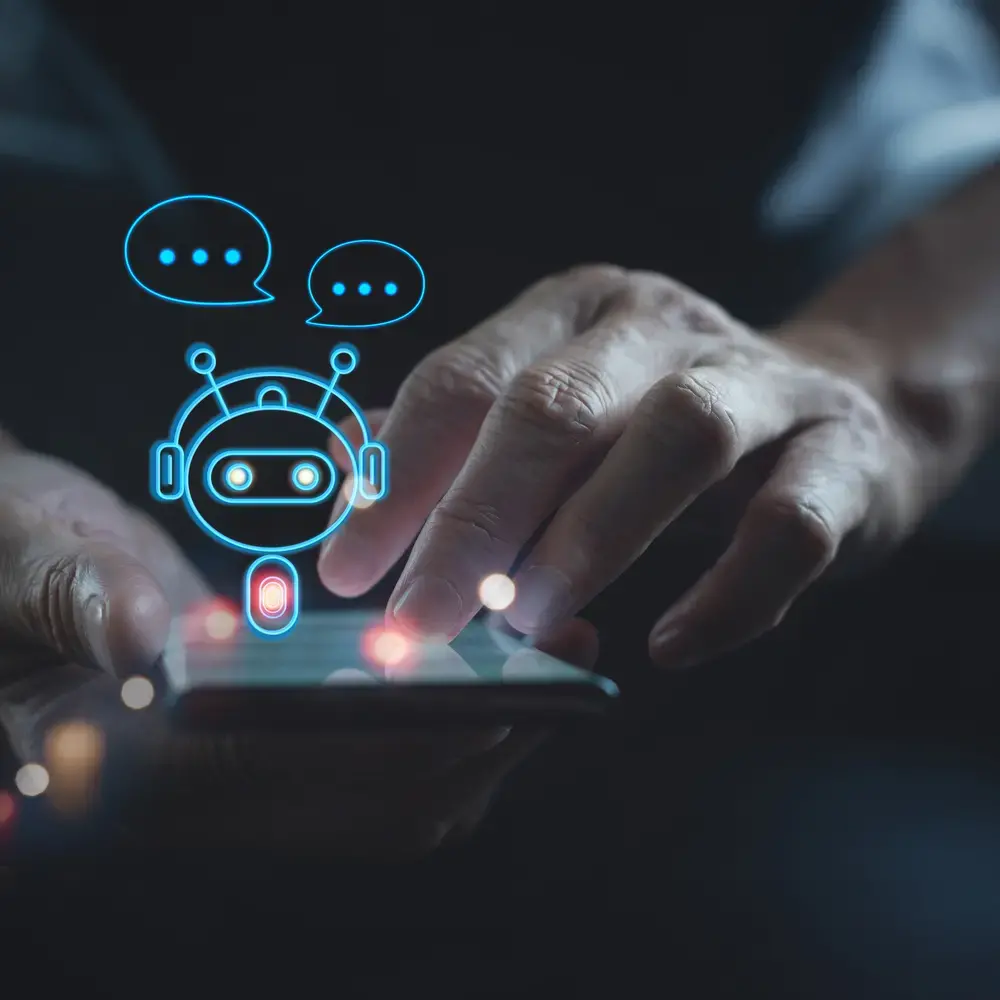Let’s Chat About Chatbots: Part 1

According to Valuates Reports, the conversational AI market is projected to reach $32.62 billion by 2030, up from $5.78 billion in 2020. While it is clear chatbots and their uses are growing, it’s important to understand what a chatbot is exactly, its uses and benefits, and how it is being applied across industries, including life sciences.
What Is a Chatbot?
Chatbots are computer programs that simulate human conversations on a variety of platforms, including websites, apps, and devices. There are five main types of chatbots:
1.) Menu- or button-based
Best used for FAQs, these bots are the most basic kind of chatbot and in the most widespread use for customer interaction. These types of chatbots present the users with several different options in list format. The user can then click through the different answer options until arriving at a final answer.
2.) Rule-based
Rule-based chatbots have more conversational abilities than menu chatbots. They are capable of answering questions using conditional logic (e.g., If A is true, then B must be…). These are commonly used in customer service applications.
3.) Keyword recognition
Keyword chatbots use natural language processing (NLP) technology and are more advanced than menu- or rule-based chatbots. The downside with keyword recognition chatbots is that they can fall short when answering questions that are similar to one another.
4.) Contextual
Contextual chatbots utilize machine learning (ML) and artificial intelligence (AI) to improve itself. More advanced than the previous chatbots listed, contextual chatbots store data from earlier conversations to improve the user experience.
5.) Voice
Voice chatbots, as one might suspect, respond to voice commands rather than keyboard or mouse inputs. These chatbots are typically seen in virtual assistant applications. Popular examples include Google Home, Amazon’s Alexa, or Siri from Apple.
Hybrid chatbots, where two kinds of AI programs are combined into one working chatbot, are also common. For example, you may encounter a voice chatbot that responds to typed inputs verbally.
What Are the Benefits of Chatbots?
Chatbots have numerous benefits regardless of industry or business department. They can be used across IT support, human resources, marketing, sales, and account management. Here are just some of the benefits of using chatbots in business settings:
- Improving customer service
- Providing enterprise support
- Acting as digital assistants
- Increasing sales efforts
- Streamlining internal requests and communications
While there are clear benefits to implementing chatbots, there is one important factor global businesses should take into account: translation.
CSA Research conducted a recent study of almost 9,000 consumers across 29 different countries that found 76% preferred purchasing products in their own language. Further, 40% stated that they would never buy products from websites in other languages.
Chatbots that are effectively localized, or accurately adapted to fit the local culture and language, have a far better chance of increasing productivity and sales for businesses. Additionally, they are better equipped to serve consumers around the world.
Chatbots and the Life Sciences Industry
What if a chatbot could monitor your health and recommend treatment options based on your symptoms? Alternatively, imagine if an AI application could take a full body scan, process the images, and report exactly what was wrong.
While some scenarios may seem a bit out of reach now, the rapid advancement of technology has made these sci-fi fantasies closer to reality than ever before. Although we may not be at the point of replacing doctors or physicians with AI, there are several real-world examples of devices being used today that bring us closer to that reality.
Companion Diagnostics
Companion diagnostics refer to chatbots that can diagnose diseases based on symptoms that a patient reports.
Interactive Instructions
Chatbots can provide instructions for physicians administering treatments or for patients using medical devices. This is particularly important for accessibility purposes, where patients may not be able to read and take in traditional treatment or device instructions.
Patient Engagement
Patient engagement is a huge reason for life sciences companies to implement chatbots in their business models. Chatbots can provide personalized care by speaking with patients on a daily basis to track symptoms, daily activities, and medications.
Medical Info & Treatment Reminders
Similar to personal assistants, chatbots can remind patients about taking their medications or upcoming doctors’ appointments.
Report Adverse Events
With everyone first looking on the internet before calling a doctor or licensed professional, chatbots offer a more informative alternative. Monitoring and reporting potential adverse events and issues in compliance is a logical next step for the technology. As more data is collected, chatbots can even be used to predict future adverse events, unforeseen side effects, or product malfunctions.
In part two, we’ll discuss some important considerations to take into account when implementing these tools in your business model. In the meantime, if you would like to learn more about TransPerfect’s AI solutions for life sciences companies, contact us here.
